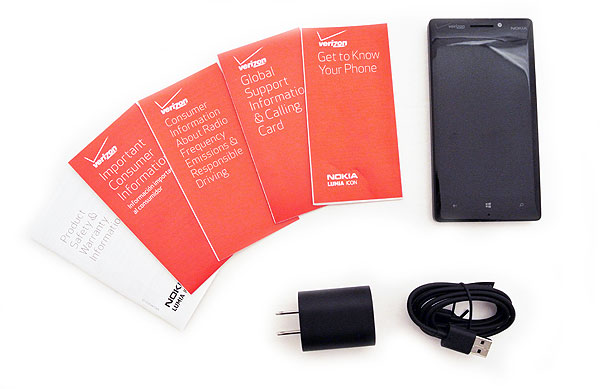Nokia Lumia Icon & Lumia 930 Review: Windows Phone, Premium
We took Nokia's Lumia Icon for a month-long test to really experience life with the company's flagship Windows Phone 8-based platform. Some of the benchmark results from this Snapdragon 800-powered powerhouse may surprise you.
Availability, Options, And Accessories
As of right now, Verizon is the only carrier offering the Lumia Icon. It can be purchased for $199.99 on a two-year contract, or for $549.99 outright. That puts it in line with other premium offerings, such as Verizon's HTC One Max and the iPhone 5s.
The phone is compatible with the following cellular bands: LTE: 700 MHz; SVLTE Band 13; Band 4; CDMA: 3G EVDO 850/1900 Rev A with Rx Diversity; Global Ready: GSM (850, 900, 1800, and 1900 MHz), UMTS (850, 900, 1900, and 2100 MHz).
Verizon ships the phone unlocked, so you could, in theory, buy it and use another company's nano-SIM card. I tested the Icon up in Canada, where it worked well on the Rogers network (albeit limited to 3G/HSPA+ networks, as the cellular modem is incompatible with this country's LTE frequencies). I'm hoping that the more recently-announced Lumia 930 will support more options than the Verizon-exclusive Icon.
In addition to its cellular connectivity, the Icon is equipped with Bluetooth 4.0 and 802.11a/b/g/n/ac Wi-Fi radios. We couldn't get Windows Phone 8 to recognize a Bluetooth-attached keyboard or mouse, since the operating system doesn't support the required HID profile. That's going to become more of a limitation as form factors continue growing. I'm much more pleased with the inclusion of wireless 802.11ac. Using the Icon on a comparably-equipped Wi-Fi network yields an impressive online experience.
Again, if you're interested in Verizon's Lumia Icon, you have a choice between a black or white phone. You get 32 GB of storage, standard, with about 23 GB accessible out of the box.
Other than a pre-installed Verizon nano-SIM card and non-removable 2420 mAh battery, the only included accessories are an AC-to-USB charger, USB-to-microUSB cable, and documentation. The lack of earphones is conspicuous, especially for a device aimed at the high-end of the smartphone spectrum.
The Icon also features Qi wireless charging support, though a charging pad must be purchased separately.
Get Tom's Hardware's best news and in-depth reviews, straight to your inbox.
Current page: Availability, Options, And Accessories
Prev Page Windows Phone 8 And Nokia Software Tour Next Page Camera Features And Example PhotosDon Woligroski was a former senior hardware editor for Tom's Hardware. He has covered a wide range of PC hardware topics, including CPUs, GPUs, system building, and emerging technologies.
-
Amdlova only problem on this phone is (verizon)... if you wanna spend 150us and a 1000 years contract. =) is right that numbers on benchies ? direct 3d working?Reply -
silverblue Sorry for the possible double post, but this comments section is bugged to hell, so...Reply
I'm surprised by the bloat. My 1020 (with Windows Phone 8.1) has 32GB, of which 29 is available, after O2's (slight) footprint. -
vaughn2k I have a Lumia 925. I will wait for the Windows Phone 8.1 update, that it seems promising... So the question if I will switch from IOS/Android to WP, then I guess I did, the 925 seems also a great phone, and the 'Store' has already a quite considerable amount of programs (or Apps)....Reply -
aldaia Wait, a "flagship Windows phone" powered by Qualcomm Snapdragon 800. Intel push into the smartphone market is certainly doomed.Reply -
tomfreak We just need Lumia 1020 sucessor = Lumia 1030 with snapdragon 800 to handle the 40MP picture. A 40MP Lumia 1030 with snapdragon 800 CPU + 2GB RAM + 32GB storage + SD card expansion + a 3000mah battery will be the killer phone that no one is able beat it. Photography takes a lot of battery drain, since thats how Lumia 1020 good at, I just hope Nokia/Microsoft put a much bigger battery inside for successor.Reply -
megamanxtreme All is well, I still got my Lumia 1520, and it still reigns the king. 920/930 with bigger screen, for the win.Reply -
Aoyagi Yeah, nice toys. About what the reviewer wanted, by the looks of it. But using these things as tools rather than toys for consuming media and maybe reading mail? No way.Reply
(I had been using Lumia 920 before I returned to 808 PureView. I still have it for testing purposes)
13186987 said:I'm surprised by the bloat. My 1020 (with Windows Phone 8.1) has 32GB, of which 29 is available, after O2's (slight) footprint.
Most of that is the OS itself. -
satish12321 Dude, how could you forget LIVE TILES. This single handedly put Lumia ahead of its competitors. Especially the new updates that will make it more informative.Reply
Android and iOs are like a graveyard of dead icons. If they font adapt, their fingerprint sensor, eye recognition and waterproofing wont be able to protect it. -
Au_equus Don, the specs listed in the table (first page) do not match the description given in the article.Reply -
jasonelmore why the hell does Verizon think they must put their logo on the phone? my god i would never buy a phone that had carrier branding on the front or back of the phone. Plus Verizon's logo is FuglyReply
